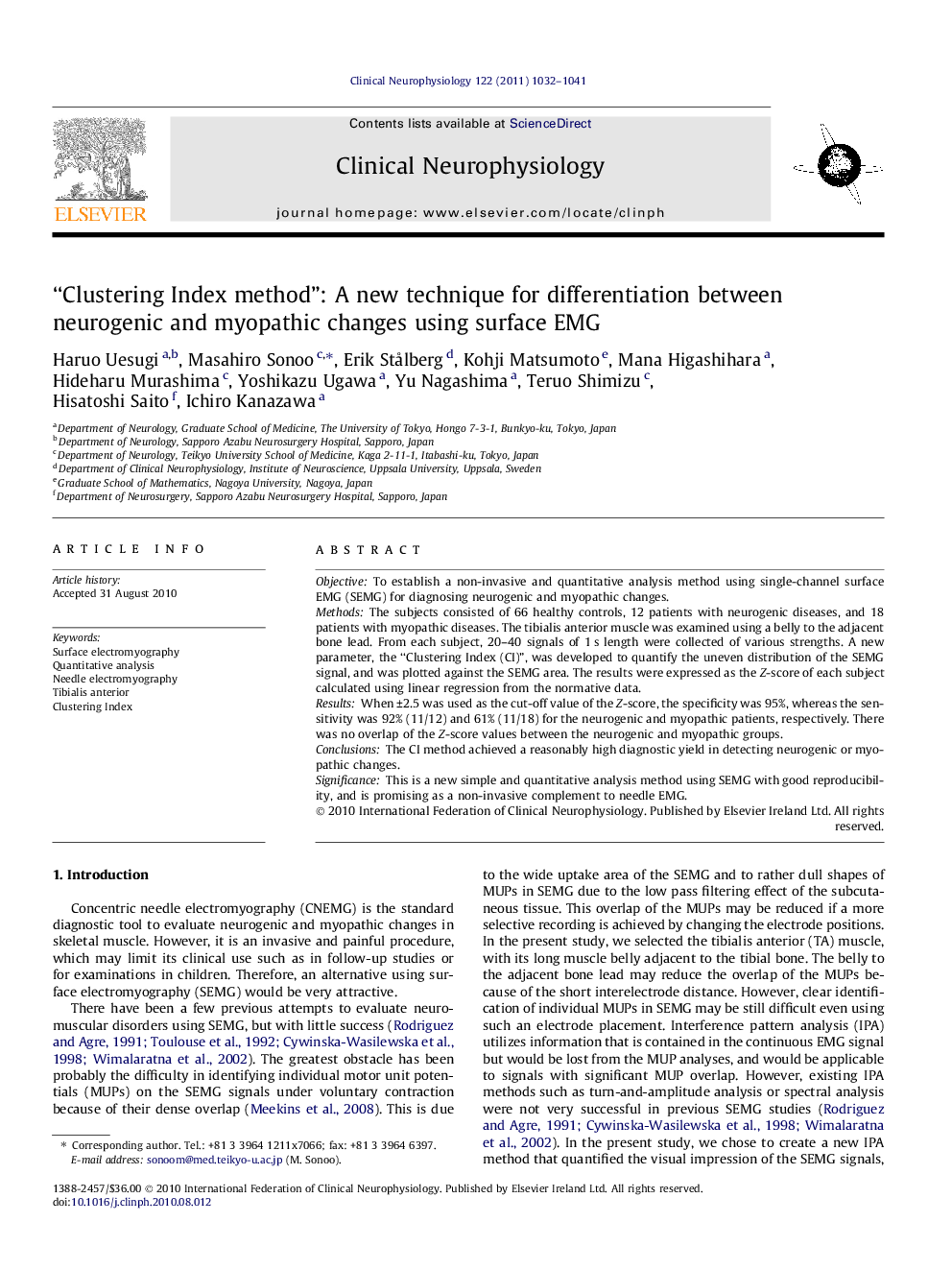| Article ID | Journal | Published Year | Pages | File Type |
|---|---|---|---|---|
| 3044484 | Clinical Neurophysiology | 2011 | 10 Pages |
ObjectiveTo establish a non-invasive and quantitative analysis method using single-channel surface EMG (SEMG) for diagnosing neurogenic and myopathic changes.MethodsThe subjects consisted of 66 healthy controls, 12 patients with neurogenic diseases, and 18 patients with myopathic diseases. The tibialis anterior muscle was examined using a belly to the adjacent bone lead. From each subject, 20–40 signals of 1 s length were collected of various strengths. A new parameter, the “Clustering Index (CI)”, was developed to quantify the uneven distribution of the SEMG signal, and was plotted against the SEMG area. The results were expressed as the Z-score of each subject calculated using linear regression from the normative data.ResultsWhen ±2.5 was used as the cut-off value of the Z-score, the specificity was 95%, whereas the sensitivity was 92% (11/12) and 61% (11/18) for the neurogenic and myopathic patients, respectively. There was no overlap of the Z-score values between the neurogenic and myopathic groups.ConclusionsThe CI method achieved a reasonably high diagnostic yield in detecting neurogenic or myopathic changes.SignificanceThis is a new simple and quantitative analysis method using SEMG with good reproducibility, and is promising as a non-invasive complement to needle EMG.
